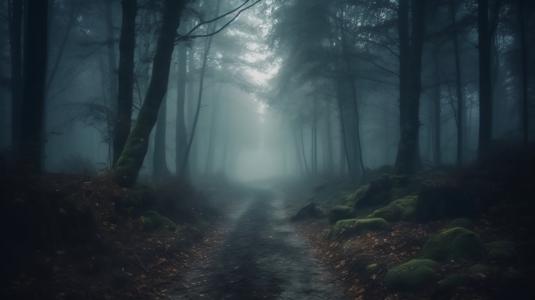In the digital age where billions of images are created daily, experimental photography techniques offer a pathway to creating truly distinctive visual work. These unconventional approaches challenge traditional photographic rules, introducing elements of chance, manipulation, and unexpected results that can’t be replicated through standard methods. For photographers looking to expand their creative repertoire, these experimental techniques open doors to fresh artistic expression.
The Renaissance of Analog Experimentation
Despite photography’s digital dominance, analog experimental techniques have experienced a remarkable revival among creative photographers seeking tactile, unpredictable results. These hands-on approaches introduce elements of chance that digital precision often eliminates.
Film soaking involves deliberately exposing undeveloped film to liquids like lemon juice, wine, or cleaning products before processing. This chemical interference creates unpredictable color shifts, dreamy textures, and light leaks that vary with each frame. The resulting images possess organic imperfections impossible to authentically replicate with digital filters.
Cross-processing deliberately develops film in chemicals intended for different film types (processing slide film in negative chemicals or vice versa). This mismatched processing creates dramatic color shifts—typically enhancing greens and blues while producing strong contrast and distinctive grain patterns that have influenced entire aesthetic movements in fashion and editorial photography.
The beauty of these analog experiments lies in their unrepeatable nature—each frame responds differently to the manipulation, creating truly unique results that counter today’s digital uniformity.
Light Manipulation Beyond Convention

Creative photographers increasingly treat light as a malleable material rather than simply an exposure element, experimenting with how light interacts with the camera to create unexpected effects.
Light painting uses long exposures while moving light sources through the frame, essentially “drawing” with light. This technique transforms ordinary environments into surreal landscapes where luminous patterns hover in darkness. Beyond basic light streaks, advanced practitioners create three-dimensional light sculptures that appear to float within the scene, existing only within the photograph.
Prismatic photography employs glass prisms, crystals, or even ordinary transparent objects held in front of the lens to bend and fracture light. These simple tools create rainbow flares, kaleidoscopic reflections, and dreamy distortions that transform ordinary scenes into ethereal, multi-dimensional images without digital manipulation.
These light experiments remind us that photography’s essence—”writing with light”—remains its most powerful creative avenue, particularly when approached with experimental curiosity.
In-Camera Multiple Exposures
While digital compositing allows precise layering of images, in-camera multiple exposure techniques introduce creative serendipity that often produces more organic, cohesive results.
Double exposure portraits merge human subjects with textures, landscapes, or architectural elements, creating symbolic visual metaphors where faces blend with natural forms or urban environments. This technique visually expresses psychological concepts like memory, identity, or emotional states through dreamlike imagery.
Sequence exposures capture motion by taking multiple exposures of a moving subject on a single frame. Unlike standard long exposures that blur movement, this technique creates distinct, overlapping iterations of the subject, visualizing time progression in a single compelling image.
The unpredictable blending of elements in these multiple exposure techniques often produces happy accidents and unexpected relationships between subjects that planned compositing might miss, adding an element of discovery to the creative process.
Intentional Camera Movement

While conventional photography prizes sharpness, intentional camera movement (ICM) embraces blur as an expressive tool, transforming ordinary scenes into painterly abstractions.
Horizontal panning creates streaking backgrounds while maintaining partial subject sharpness, suggesting speed and dynamism. This technique transforms even static subjects into kinetic compositions where color and line dominate over literal representation.
Rotational movement involves physically rotating the camera during exposure, creating spiral patterns that convert ordinary scenes into vortex-like abstractions. When centered on a strong focal point, this technique creates hypnotic images where the viewer’s eye is drawn inexorably toward the stable center amidst swirling surroundings.
These movement techniques remind us that photography isn’t limited to freezing moments—it can also express emotional and subjective experiences of place and time through deliberate technical choices.
Physical Manipulation of the Image Surface
Some of the most distinctive experimental photography involves directly altering the physical photograph or negative, treating the image as just the starting point for creative expression.
Emulsion lifting separates the emulsion layer from instant film, creating a translucent, skin-like image that can be transferred to different surfaces. This delicate process allows photographs to take on three-dimensional qualities as the emulsion wrinkles, stretches, and conforms to new substrates ranging from watercolor paper to wood or fabric.
Negative scratching deliberately damages film negatives by scoring, puncturing, or chemically altering their surface. These controlled destructions introduce marks that appear as white lines, spots, or textural elements in the final print, adding graphic elements that interact with the photographic image to create hybrid media works.
These physical manipulations challenge the notion of photography as merely image capture, positioning it instead as the beginning of a more extensive creative process that may incorporate elements of drawing, collage, and sculpture.
Experimentation as Photographic Philosophy

Experimental photography techniques offer more than just novel visual effects—they represent a philosophical approach that values discovery, chance, and personal expression over technical perfection. By embracing unpredictability and allowing for “happy accidents,” photographers develop a more playful, exploratory relationship with their medium.
The resulting images often possess a distinctive authenticity precisely because they cannot be precisely replicated, even by the original creator. In a visual landscape dominated by perfect digital imagery, these experimental approaches create photographs with tangible presence and uniqueness that increasingly rare in contemporary photography.
As you incorporate these experimental techniques into your creative practice, remember that technical “failures” often lead to the most compelling artistic discoveries. The willingness to work without guaranteed results—embracing risk as an essential creative ingredient—ultimately defines the experimental approach to creative photography.


